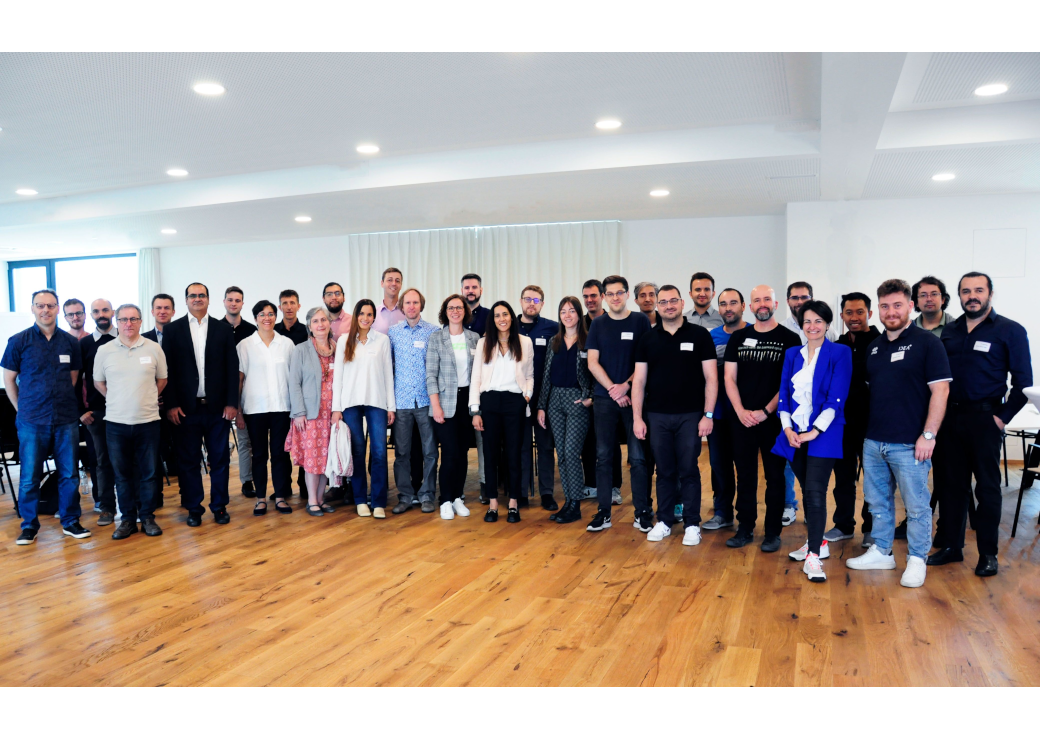AI@Work
Short Description
The aim of this exploratory project with a budget of approx. EUR 200,000 was to develop a technical concept for teamwork between humans and AI systems, including requirements from different areas of the digitalised working environment. In contrast to the paradigm of 100% automation, AI@Work is based on the opposing view that greater efficiency and effectiveness can only be achieved through coordinated teamwork between AI and humans.
The methodological approach is based initially on analysing the strengths and weaknesses of AI systems compared with human operators and/or engineers. AI systems have a particular strength when it comes to scaling up, i.e. scalable processing of data for the purposes of prediction, optimisation, etc.; however, current AI systems lack the flexibility in dealing with changing underlying conditions or a lack of data.
It is precisely the opposite case with humans and it makes sense therefore to combine the respective weaknesses and strengths in line with the idea of teamwork. However, team intelligence is a new category and challenge in AI research.
In order for a team to work well, it needs above all to know who is responsible for what, in what context, to what extent and in what role. Flexibility is required in implementation, even if this distribution of roles has been defined in advance. Team intelligence is characterised by precisely this type of flexibility. In order to make this flexibility possible, communication between the actors is needed and above all a common ground to avoid misunderstandings.
One important outcome of this project was the technical concept using knowledge graphs and use of these for (relational) machine learning. This concept was the starting point for the European "TEAMING.AI" project (teamingai-project.eu) which was subsequently successfully submitted and was led by the SCCH with a project volume of EUR 5.7 million.
TEAMING.AI is specifically tailored to address teamwork in production but also covers issues involving auditability, ergonomics and safety. As one international study shows, it is precisely the aspect of dynamics in teamwork that represents one of the greatest challenges. The AI@Work or TEAMING.AI approach demonstrates a significant technical innovation for solving the dynamics problem, with a new method for rapid updates to knowledge graphs and corresponding embedding within machine learning algorithms.
This project is a contribution to the human-centred, ethically acceptable and transparent integration of humans and artificial intelligence in the working environment. This concept gives skilled workers an additional more valuable role in monitoring and improving these types of systems, thereby enabling a greater degree of flexibility in a rapidly changing working environment with increasing demands for small batch sizes and personalised products.
Publications
Brochure: Digital Technologies (2024)

Ready for the Future: Smart, Green and Visionary. Project Highlights of the Years 2016 to 2021.
FFG: Olaf Hartmann, Anita Hipfinger, Peter Kerschl
Publisher: Federal Ministry for Climate Action, Environment, Energy, Mobility, Innovation, and Technology
English, 72 Seiten
Publication Downloads
Project Partners
Consortium leader
Software Competence Center Hagenberg GmbH (SCCH)
Additional consortium partners
- Industrie 4.0 Österreich – die Plattform für intelligente Produktion
- Institut für Arbeitsforschung und Arbeitspolitik an der Johannes Kepler
- APOLLO.AI GmbH, Wirtschaftsuniversität Wien
- PROFACTOR GmbH

